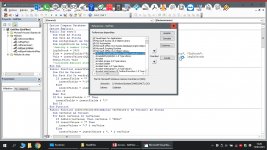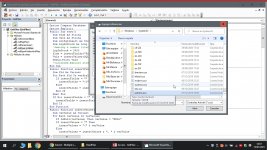MajP
You've got your good things, and you've got mine.
- Local time
- Today, 13:38
- Joined
- May 21, 2018
- Messages
- 9,998
Finally figured it out. I did not see that you had these as FAYT comboboxes as well.
Unfortunately you cannot just requery a FAYT combobox. I need to add some notes to the class. You have to set the the rowsource of the FAYT.
I thought I was going crazy.
These classes are nice because they are extremely flexible and reuseable to allow you to filter a form or a combobox as a FAYT.
In truth where you are tying the FAYT form and the FAYT combos to other filters, it may have caused more problems. Trying to get all of this to work together may have been easier with hardcoding the FAYT features.
Unfortunately you cannot just requery a FAYT combobox. I need to add some notes to the class. You have to set the the rowsource of the FAYT.
I thought I was going crazy.
Code:
Public Function FilterRequery()
On Error Resume Next
UpdateDynamicQuery
ActiveControl.Requery
'When you requery a FAYT you need to set the resource of the FAYT. Requerying the related combo is not enough.
cmbEstado.RowSource = Me.CodigoEstado.RowSource
cmbCategoria.RowSource = Me.CodigoCategoria.RowSource
cmbSubcategoria.RowSource = Me.CodigoSubcategoria.RowSource
DoEvents
Me.Refresh
Me.Repaint
End FunctionThese classes are nice because they are extremely flexible and reuseable to allow you to filter a form or a combobox as a FAYT.
In truth where you are tying the FAYT form and the FAYT combos to other filters, it may have caused more problems. Trying to get all of this to work together may have been easier with hardcoding the FAYT features.


